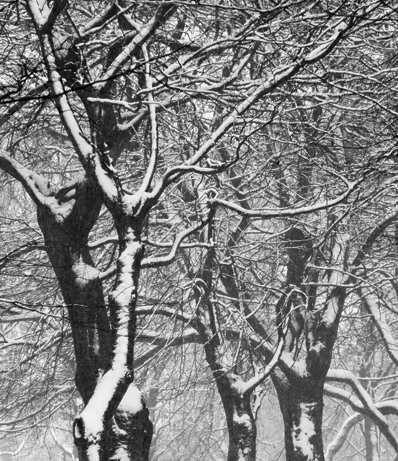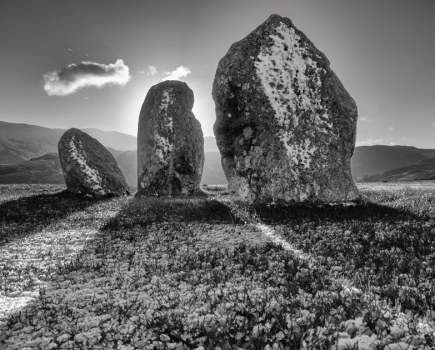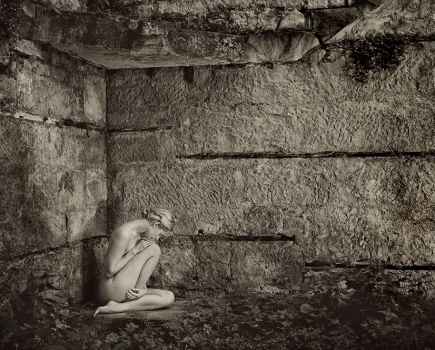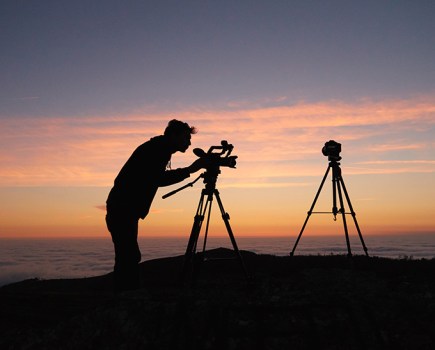Photographing Snow – Use a zoom lens
Zoom lenses are an ideal choice for photographing snow in these conditions, as you don’t want to keep changing lenses in the cold.
A couple of zooms are perfect, so you have one to cover wide-to-standard focal lengths for overall scenes, and a mid-to-long telephoto for isolating details.
If you have
an ultra-zoom lens, covering focal lengths from very wide to long telephoto, you won’t
have to change lenses at all and be ready
for all situations.
Photographing Snow – Shield your lens

A blue sky and bright sunshine are the perfect combination to make the most of fresh snow.
Watch out for the sun, though, which will be much lower in the sky at this time of year and can lead to flare. To avoid this, use a lens hood at all times or shield the lens with your hand when taking a picture.
Photographing Snow – Focus on the smaller details
If it’s an overcast day don’t despair.
In these conditions, it’s worth ignoring the wider view to concentrate more on the smaller details within the landscape, such as close-ups on the ground and flowers covered in frost.
Head to the park

Your local park will provide lots of opportunities for photographing snow as there will be plenty of trees covered in snow, which make good abstracts, and leaves on the ground for close-ups.
Even the park bench or children’s playground can throw up some interesting abstracts as the
snow wraps itself around the metal bars.
Look for everyday objects
Look out for everyday objects that stand out in these conditions, which you would otherwise ignore. A red bench, for instance, covered with snow, will look great and adds a welcome splash of colour to a shot.
If you got up early before heading off to work or have the day off, don’t forget to capture other people heading out in the wintry conditions. If it is still snowing outside, showing the bleak conditions or kids enjoying the snow can be another way of capturing the effects of a winter’s day. People sledging at the local park can provide some great action images, too
Use a polariser
 A polariser is ideal for taking your winter shots, as it reduces glare from the bright snow and adds a rich colour to any blue sky. This adds extra contrast to a scene and gives the image extra punch.
A polariser is ideal for taking your winter shots, as it reduces glare from the bright snow and adds a rich colour to any blue sky. This adds extra contrast to a scene and gives the image extra punch.
It also helps when photographing frozen water or icicles, again by reducing any glare and reflections, making the main subjects stand out more
Overexpose your images

By default, your camera’s integral metering wants to record everything as a mid-grey colour. Therefore, your crisp, white snow scenes will be underexposed and look drab and too dark.
This can happen whether you are using centreweighted metering or sophisticated matrix metering to work out your exposures.
To compensate for this, you need to overexpose the scene by 11⁄2-2 stops. You can do this by setting this amount on the exposure compensation dial or by switching to manual and setting either the shutter speed or aperture over what the camera’s reading in the viewfinder is suggesting. So, if it reads 1/125sec at f/16, then you should set the shutter speed to 1/30sec at f/16 or 1/125sec at f/8.
Both ways will give 2 stops extra exposure and this will clean up the whites and show the snow as it is meant to look.
Use a handheld meter
A second way of achieving correct exposure is to use a separate handheld meter.
This takes an incident light reading to measure light, as opposed to reflected, as the camera’s own meter does. As it isn’t influenced by the light bouncing off the white snow, it should give an accurate reading every time.
You can also take a reading off a small piece of mid-grey card (with 18% reflectance) held at arm’s length, in the same light as your main scene. This achieves the same incident light reading,
giving a more accurate exposure.
Take precautions
Once your shoot is over, remember to take precautions when you get home.
First remove the film or cards from your camera and leave your gear in the bag for an hour or two to avoid condensation.
When you finally check your images, you’ll be glad you made the most of the cold snap and no doubt will have some rewarding images that were worth getting out of bed for.
Content courtesy of Craig Roberts. Article first appeared in AP issue 9 Jan 2010.







